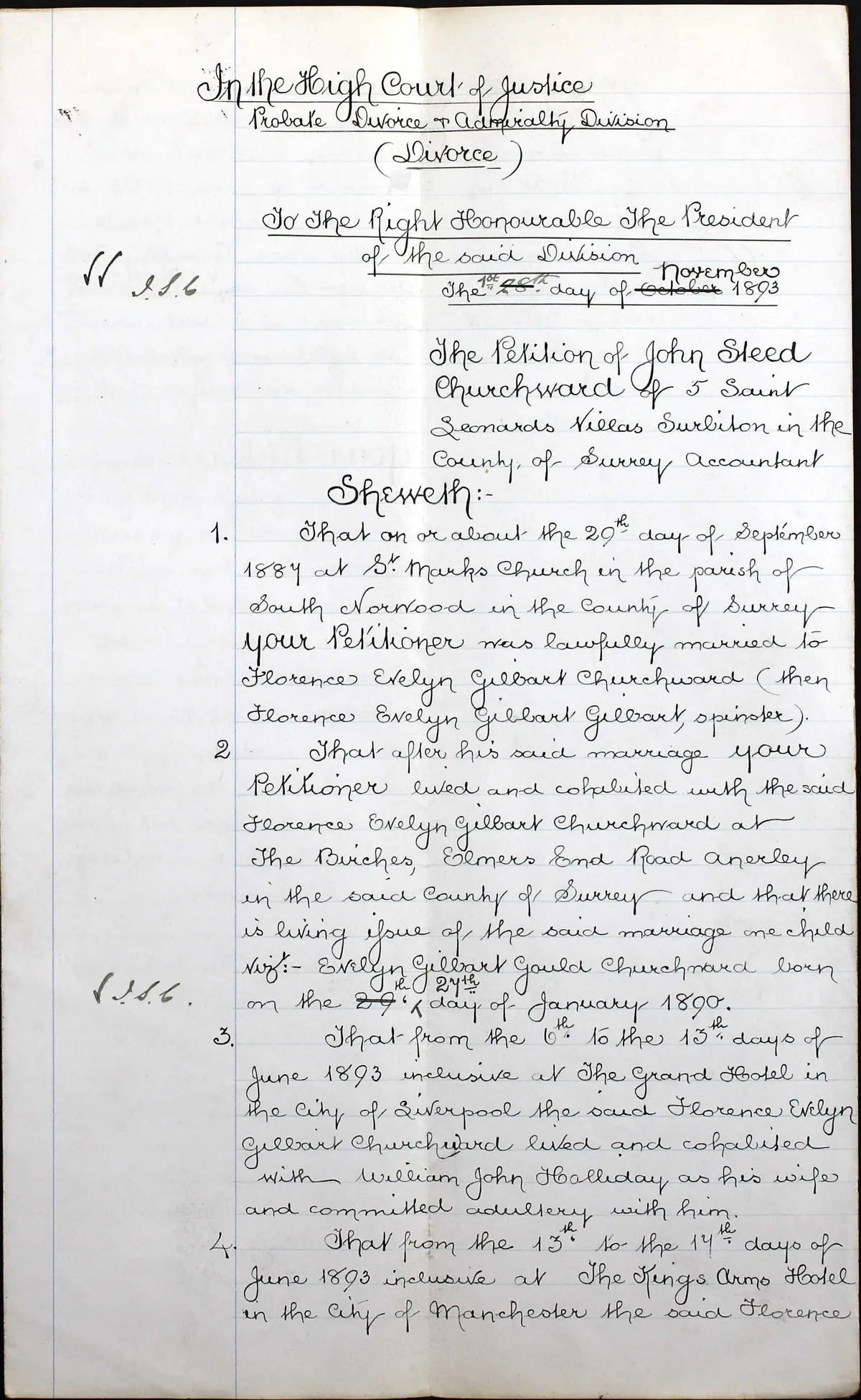Divorce records can be a particularly rich source of insight into the dynamics of a relation’s family life and the reasons behind the failure of their marriage. However, to understand what records are available, researchers will need to have a basic knowledge of the law.
In England and Wales, it has only been possible to obtain a divorce in the modern sense – a judicial decree terminating a marriage – since 1858. Before that time, a church court could rule that a marriage had never existed and so grant an annulment, or could issue a ‘divorce from bed and board’ that allowed a couple to separate but not to remarry. There also existed the expensive (and rare) option of obtaining a divorce by private Act of Parliament, which can be found at the Parliamentary Archives. Between 1670 and 1858 some 320 such Acts were passed, almost invariably for the benefit of wealthy men whose wives had committed adultery. Only four women managed to divorce their husbands by this route.
In 1858, the Court for Divorce and Matrimonial Causes was established in London. A husband needed only to prove his wife’s adultery. In contrast, a wife had to prove her husband’s adultery plus cruelty, desertion, incest or bigamy, or instead prove that he had committed rape, sodomy or bestiality. The court would refuse a divorce if the petitioner had colluded in or condoned their spouse’s behaviour, and could also refuse if the petitioner too had committed adultery.
So, what divorce records are available from 1858? The formal Law Reports contain judgments where points of legal importance were involved, and so only include a minority of cases. Old newspapers may also contain detailed accounts of your ancestors' divorce. At the very least, though, for every divorce there will have been a case file. Thankfully Ancestry has files from 1858 to 1918. The information in surviving files tends to follow a standard form and can run to many pages. For the family historian the most interesting part is usually the ‘petition’ setting out the details of the wedding (the certificate is usually included), where the couple lived, the birth of any children, and the basis on which the divorce was sought. Details had to be given of the person(s) with whom the ‘respondent’ had committed adultery, and the particular circumstances.

In petitions by wives, ‘cruelty’ was relied on more often than the other aggravating factors, and here we find a depressing litany of physical violence. If the wife was alleging ‘desertion’, then the dates of the separation are usefully included. If a divorce was granted then the relevant dates (of the preliminary decree nisi and the subsequent decree absolute) will be recorded on the cover of the file.
The vast majority of files up to 1937 have survived in The National Archives at Kew (TNA), and the archive’s online catalogue Discovery can be searched for the names of the petitioner, respondent or co-respondent. However, the ‘100-Year Rule’ regarding privacy means you will need to wait to see what is contained in files created after 1922.
Unfortunately, scarcely any post-1937 files survive: as the number of divorces increased, so courts were unable and unwilling to store the mountains of paperwork involved. All that can be ascertained from the Central Family Court is whether a divorce was granted, and even this entails a fee (£10 if you can provide the case number, otherwise £45 for every 10 years of records searched). You will need to complete and return Form D440.
Finally, the statistics on the number of divorces granted each year can help to put the likelihood of a divorce in context. The number exceeded 100 in 1859, 1,000 in 1918, and 10,000 in 1943. These increases reflected both social and legal changes. From 1922 at least some divorces were granted outside London, from 1923 wives no longer had to prove ‘aggravated’ adultery, and in 1937 the grounds for divorce were extended to include cruelty and desertion.
However, remember that for many of our ancestors, divorce would not have been an option. Only in 1971 did it become possible to obtain a divorce without showing that the other spouse was at fault, and then only after a period of separation, and only in 2022 was legal no-fault divorce introduced.